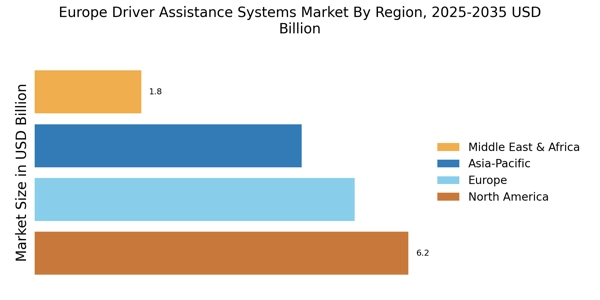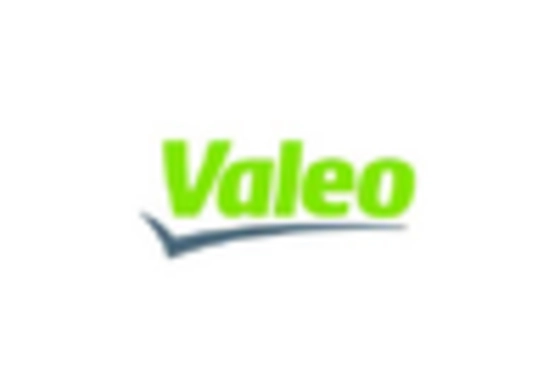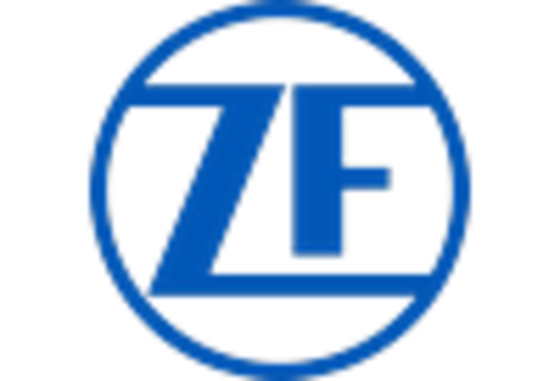Regulatory Framework
The regulatory landscape significantly influences the Europe Driver Assistance Systems Market. Governments across Europe are implementing stringent safety regulations aimed at reducing road accidents and fatalities. For example, the European Union has mandated that all new vehicles must be equipped with certain safety features by 2022, including emergency braking systems and lane departure warnings. This regulatory push is expected to drive the adoption of driver assistance technologies, as manufacturers must comply with these requirements to remain market players. Furthermore, the European Commission's initiatives to promote road safety and reduce emissions are likely to bolster the demand for advanced driver assistance systems. As a result, the regulatory framework serves as a catalyst for innovation and investment in the Europe Driver Assistance Systems Market.
Consumer Demand for Safety
There is a growing consumer demand for enhanced safety features in vehicles, which is a key driver for the Europe Driver Assistance Systems Market. Recent surveys indicate that a significant percentage of consumers prioritize safety technologies when purchasing a vehicle. This trend is further supported by increasing awareness of road safety issues and the potential for driver assistance systems to mitigate accidents. The market data suggests that vehicles equipped with advanced safety features can command higher prices, reflecting consumer willingness to invest in safety. As a result, automakers are increasingly integrating driver assistance technologies into their offerings to meet consumer expectations. This shift in consumer behavior is likely to continue influencing the Europe Driver Assistance Systems Market, as safety becomes a paramount concern for both manufacturers and buyers.
Sustainability Initiatives
Sustainability initiatives are becoming a driving force in the Europe Driver Assistance Systems Market. As environmental concerns gain prominence, there is a growing emphasis on developing technologies that not only enhance safety but also reduce carbon emissions. Driver assistance systems contribute to this goal by optimizing driving patterns, thereby improving fuel efficiency and lowering emissions. The European automotive industry is increasingly focusing on sustainable practices, with many manufacturers committing to electrification and the integration of eco-friendly technologies. This shift is likely to create new opportunities for driver assistance systems that align with sustainability goals. Market analysts predict that the demand for such systems will rise as consumers and regulatory bodies alike prioritize environmentally responsible solutions. Consequently, sustainability initiatives are expected to play a crucial role in shaping the future of the Europe Driver Assistance Systems Market.
Technological Advancements
The rapid evolution of technology plays a pivotal role in shaping the Europe Driver Assistance Systems Market. Innovations in artificial intelligence, machine learning, and sensor technologies are enhancing the capabilities of driver assistance systems. For instance, advanced driver-assistance systems (ADAS) are increasingly incorporating features such as adaptive cruise control, lane-keeping assistance, and automated parking. According to recent data, the market for ADAS in Europe is projected to grow at a compound annual growth rate (CAGR) of approximately 10% over the next five years. This growth is driven by the increasing demand for safety features and the integration of smart technologies in vehicles, which are becoming standard in new models. As a result, manufacturers are compelled to invest in research and development to stay competitive in the Europe Driver Assistance Systems Market.
Integration with Autonomous Vehicles
The integration of driver assistance systems with autonomous vehicle technology is emerging as a significant driver in the Europe Driver Assistance Systems Market. As automakers and technology companies invest in the development of autonomous vehicles, the need for sophisticated driver assistance systems becomes increasingly apparent. These systems serve as a foundation for the transition towards fully autonomous driving, providing essential functionalities such as obstacle detection and collision avoidance. Market forecasts indicate that the demand for semi-autonomous features will rise sharply in the coming years, as consumers become more comfortable with the idea of automated driving. This trend suggests that the Europe Driver Assistance Systems Market will experience substantial growth as the lines between traditional driver assistance and autonomous technology continue to blur.


















Leave a Comment